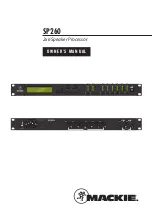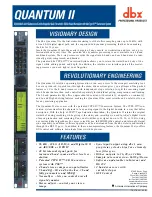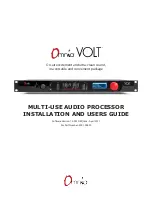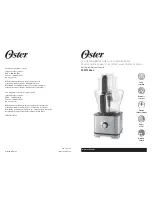
Listening Modes
Outlaw Audio
14
7.1 Multichannel High Resolution
Lossless Digital Audio
Packing (MLP), the lossless audio compression
format employed on DVD-Audio. Since the
compression used does not discard any data, a
TrueHD track preserves the original integrity of the
uncompressed master.
DTS
DTS is an alternative to Dolby Digital that shares
the same basic concept: six channels of audio,
compacted using a lossy compression algorithm
to save space. DTS uses an algorithm that is not
as effi
cient as Dolby Digital and therefore not as
heavily compressed, which many people believe
allows it to sound better.
DTS-HD High Resolution
DTS responded to Dolby Digital Plus with DTS-HD
High Resolution. DTS-HD High Resolution is an
extension to DTS 96/24 that allows higher bitrates,
but it still employs lossy compression. Like DD+,
DTS-HD HR supports 7.1 channels, may be in-
cluded on both Blu-ray and HD-DVD, and can only
be transmitted via HDMI v1.3 or higher.
DTS-HD Master Audio
Despite the similarities in name, DTS-HD Master
Audio is a completely separate audio format from
DTS-HD High Resolution. Like Dolby TrueHD,
DTS-HD MA employs lossless compression to
provide a format that off ers the sound quality of
an uncompressed PCM track while off ering a way
to use less disc space. DTS-HD Master Audio also
supports 7.1 channels.
Multichannel PCM
HDMI allows sources to output multichannel
PCM because the connection can support the
greater volume of data required to transmit up
to eight channels of uncompressed digital audio.
A multichannel PCM signal may be as delivered
directly on a Blu-ray Disc, or as derived from
any compressed audio bitstream the player can
decode (including the formats listed above).
DSD
Around the time that the DVD-Audio format was
released as a prospective successor to CD, Sony
introduced the SACD format for both stereo
and multichannel audio. Both disc formats off er
digital audio quality superior to CD audio as well
as support for 5.1 audio. Where DVD-Audio used
a lossless compression technology to package
PCM (pulse-code modulation) audio, SACD used
an encoding technology called DSD that uses
pulse-density modulation. SACD players with an
HDMI v1.2 or higher output may output a native
DSD bitstream. The Model 976 can decode a
DSD bitstream to PCM.
Note: Not all disc players support SACD or DVD-
Audio playback. See your player’s specifi cations.
Dolby Pro Logic II/IIx Movie
This mode takes two-channel movie and TV
content, such as Dolby Digital 2.0 DVDs, most
TV shows, Netfl ix programs, etc., and converts
them to 5.1 (Pro Logic II) or 7.1 (Pro Logic IIx).
The parameters in this mode are non-adjust-
able. You can leave this mode on for all two-
channel TV and movie material. It’s comparable
to DTS NEO:6 Cinema, so you should try both
and see which one you like better.
Dolby Pro Logic II/IIx Music
This mode converts two-channel music from
analog or digital sources to 5.1 or 7.1. It off ers
three adjustable parameters: Center Width,
Dimension and Panorama. For explanations of
these, see page 32. It’s roughly comparable to
DTS NEO:6 Music mode; we recommend you
use whichever mode you like best. You may fi nd
one or the other works better for certain types
of music.
Dolby Pro Logic II/IIx Game
The PLII/IIx Game mode is optimized for use
with video games that have 2.0-channel sound,
and especially for use with games that are
Pro Logic II-encoded.
DTS NEO:6 Cinema
NEO:6 Cinema converts any two-channel movie
or TV content into 5.1, 6.1 or 7.1. It works great
with most TV shows, Netfl ix programs, etc., and
you can leave it on for all two-channel TV and
movie material. It’s similar in function to Dolby
Pro Logic II/IIx Movie mode, so you can compare
the two and use whichever one you prefer.
DTS NEO:6 Music
NEO:6 Music is tuned to work well with any
two-channel music source, whether analog
or digital. Compare it with Dolby Pro Logic II/
IIx Music mode and use the technology that
sounds best to you.
All Channel Stereo
This is the only non-licensed surround mode we
chose to include in the Model 976, and we in-
cluded it for a very good reason: It’s the perfect
mode for parties. The same sound comes from
the front and rear speakers—it’s not matrix-
decoded as it is with PLII/IIx and NEO:6—so the
sound spreads nicely around the room and all
your guests can hear the music. Some people
like it for regular music listening, too.















































